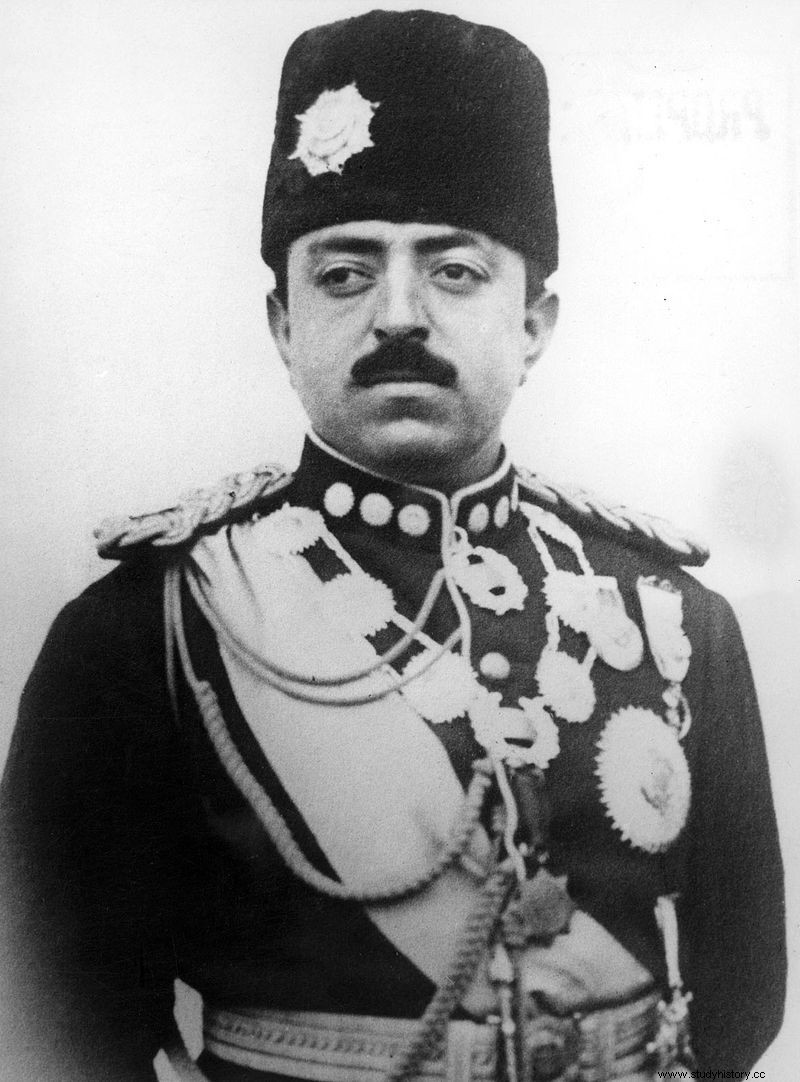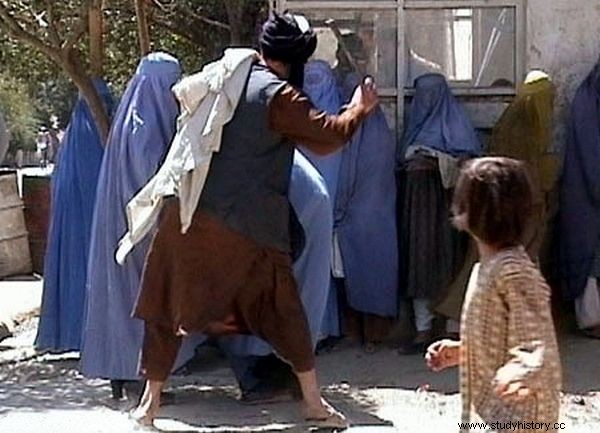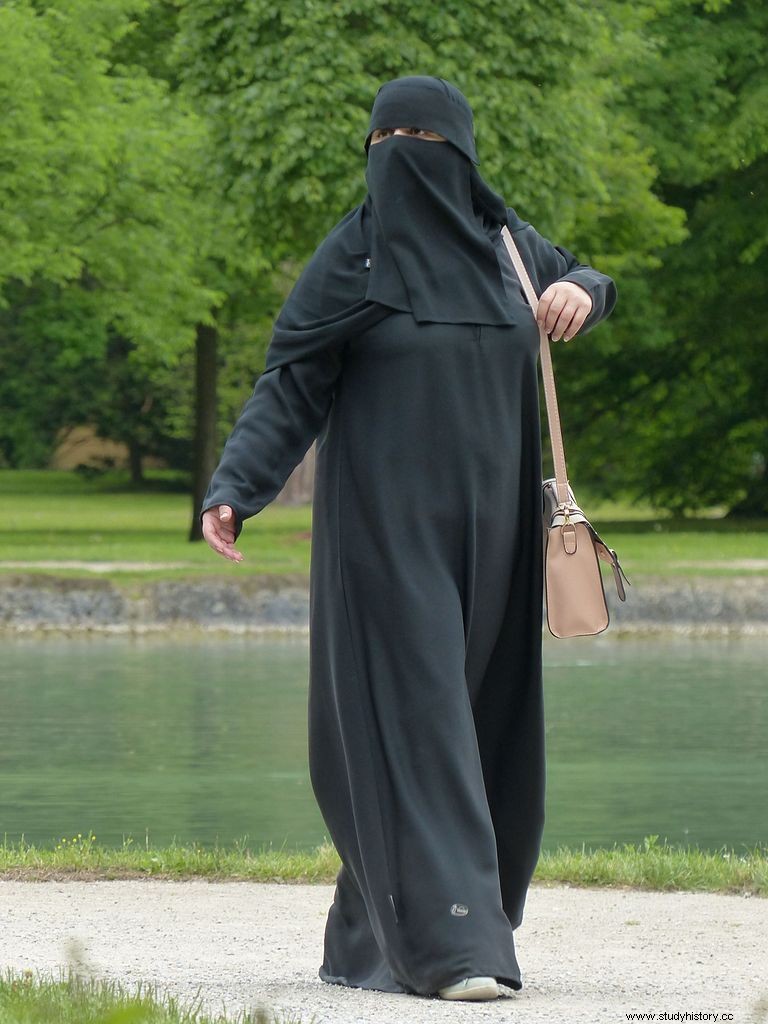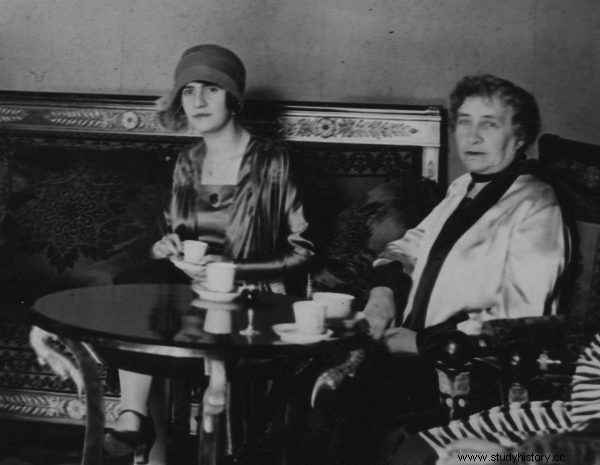Half a century ago they had the right to vote. Thirty years earlier, they shook local politics. So why did they lose their elementary rights? And are the Taliban really to blame for everything?
"Violence against women has always existed in Afghanistan," wrote members of the Afghan Women's Network in 1997. "Violence is a daily bread in the daily lives of Afghan women, although it escalates during racial or political clashes and when other groups come into conflict" . Indeed, the frequent changes in power and its weakness in the twentieth century were definitely against the Afghan women. Even if it seemed several times that the fate of women could improve thanks to the involvement of the rulers.
First reforms
The first wave of reforms, initiated by the emir Abdur Rahman Khan, who ruled at the end of the 19th century, reached its peak in the 1920s. Thanks to the numerous actions of King Amanullah Khan, the legal situation of Afghan women was in some respects even better than that of Polish women of that time.
For Amanullah, the laws regulating women's rights were part of the modernization of the country according to Western standards. His wife, Soraja Tarzi, walked around with an open face and became the minister of education in the Afghan government. The king promoted the education of girls, wanted to limit marriage fees, prohibit the engagement of children and the traditional exchange of women at the end of clan conflicts.

King Amanullah Khan did a lot for the situation of women in Afghanistan.
Amanullah's successes did not last long, however. They were also limited in scope, because the changes were actually felt only by women living in Kabul . Protests against unwanted reforms and the increasing burdens imposed by the king grew in the provinces. As early as 1929, the progressive monarch was forced to abdicate and leave the country. His successor, Habibullah II, managed to withdraw virtually all laws improving the status of women within a short, nine-month reign.
The timid reforms did not resume until the Zahir Shah rule, when Mohammad Daud held the office of prime minister. Bearing in mind the opposition Amanullah faced, it was not dared to do so until the 1950s! Daud preferred the strategy of small steps, and first he "tested" the reforms in the capital, which is relatively the most liberal center in the country. This is how the historian of Afghanistan, Thomas Barfield describes the process:
The best example of [Daud's methods] was the lifting of the obligation for women to cover their faces […]. Rather than issuing a proclamation or engaging in any kind of awareness-raising debate, Prime Minister Daud simply got the wives of the royal family and high-ranking government ministers to sit unshielded in judicial positions at the 1959 National Day parade where everyone could see them.
Second Wave
The changes Daud introduced through the Facts Method were quite limited. However, the situation of women under King Zahir Shah gradually improved. Their professional activity increased, and in 1964 they gained the right to vote. However, the real revolution came after the fall of the monarchy in 1978. As a result of the coup, power was taken over by the Soviet-backed members of the communist People's Democratic Party of Afghanistan.
The new leaders immediately embarked on radical reforms affecting every area of life. Believing in their military advantage, they proposed a program that was even more progressive than Amanullah in the 1920s. Women's rights were regulated by Decree No. 7. It postulated the equality of women and the abolition of fees paid by the groom's family for his future wife. The age of girls' marriage has been raised to 16. From then on, the relationship could also be concluded only with the mutual consent of the future spouses.

The Taliban takeover of Afghanistan was a real nightmare for women. Pictured, the Taliban religious police are flogging women publicly.
As before, the radicalism of the reforms provoked a violent reaction from part of society. An uprising broke out against the LDPA rule, which from then on relied almost entirely on the strength of the Soviet army. When the USSR withdrew its troops after ten years of intervention, the fundamentalist mujahideen quickly began to gain the upper hand. Their seizure of Kabul in 1992 spelled another twist for women. Their situation drastically worsened. And then, when the Mujahideen were replaced in power in 1996 by the Taliban, it turned out that things could get even worse .
Up to three times a piece?
The laws introduced by fundamentalists were extremely restrictive. The Taliban ideology was a mixture of ultra-conservative interpretations of Islam and customary tribal norms of behavior. The new regulations restricted the freedom of movement of women, deprived them of the right to education and a profession. Afghan women also did not have access to medical care, because they were not allowed to see a male doctor, and doctors were forbidden to practice. In the public space, even ... the clatter of heels and the sound of female laughter were forbidden!
The abolition of draconian laws came only after the American intervention. However, more than fifteen years have passed since the fall of the fundamentalist government, the situation in Afghanistan still leaves much to be desired. Back in 2011, the Thomson-Reuters foundation recognized this country as the most dangerous for women. According to the Foundation's data, 87% of Afghan women were illiterate.

American intervention in Afghanistan partially halted the radical reforms of the Taliban.
Equally terrifying were the data presented in the report on high maternal mortality in childbirth and the number of women and girls forced into marriage. "The last 12 years have not brought changes in the lives of the poor, ordinary Afghans" - admits Norwan, an Afghan woman who describes life in a country emerging from war. “Women are still victims of domestic violence. Children, even seven-year-olds, beg in the streets and keep the house. ”
Why is it failing?
There are many reasons why past bold reform plans have failed. First of all, both Amanullah and the LDPA communists wanted to change too much and too quickly. This is how Julie A. Mertus, a researcher of the situation of women in conflict-ridden countries, describes the changes in the 1970s:
The changes were radical and implemented without consulting rural communities, sometimes forcibly. Municipal workers who came to the villages to teach reading sometimes enlisted women to join the men in lessons. Such extreme actions fueled the opposition, and many provincial residents took up armed resistance against the LDPA.
The changes introduced were usually too far-reaching. They covered much more than women's rights issues. They were an attempt to radically transform the entirety of social life. They also often struck against sanctity. Amanullah, striving to westernization of Afghanistan, took for example a fight ... against traditional Afghan religiosity. His intention, Barfield writes, was "to purge the practice of Islam in Afghanistan of its folk rituals, traditional taboos and prejudices which he claimed were supported by ignorant and self-centered clergy." .

Burqas are worn by Muslim women not only in Afghanistan.
In return, the Afghans were offered foreign role models. In the 1920s, a Western-style order was imposed. In the 1970s, patterns followed from the USSR. They were accepted in Kabul, but rural communities highly independent of central government rejected them.
The Taliban movement can be understood precisely as a reaction against an insensitive and arrogant modernization. They were afraid of losing their identity. "Modern values, especially in relation to gender roles, have been equated with foreign imperialists, be they British or Russian" - noted by Shaista Wahab and Barry Youngerman.
Finally, the reformist plans were hampered by the country's instability and numerous external interventions. The British, Soviets and Americans used Afghanistan for their own purposes, not concerned with the destructive effect their actions had on the internal balance. A crowning example is the British maneuver in 1928.

The photos of Queen Sorai from her travels around Europe were a shock to the faithful Afghans. In the photo the queen (left) with Michalina Mościcka.
The islanders distributed in the Afghan countryside… photos of the royal couple from their trip to Europe. From the point of view of the traditional mentality they were shocking :the queen walked around with her face exposed, and strange men could kiss her hand. This intensified opposition to the rule of Amanullah.
"In times of crisis, be it political, economic or community, the family tends to tighten its control over women, state and social repression, and violence against women increases" - wrote in 1997 members of the Afghan Women's Network. Despite the passage of years and the regime change, this statement has not lost its relevance. For the effects of reforms to be sustainable, moderate, stable governance is needed. And peace is needed.
Inspiration:
This article was inspired by Reyes Monforte's novel "The Burka of Love". The moving story of a Spanish woman's relationship forced to live in a country ruled by the Taliban (WAM Publishing House 2017).
